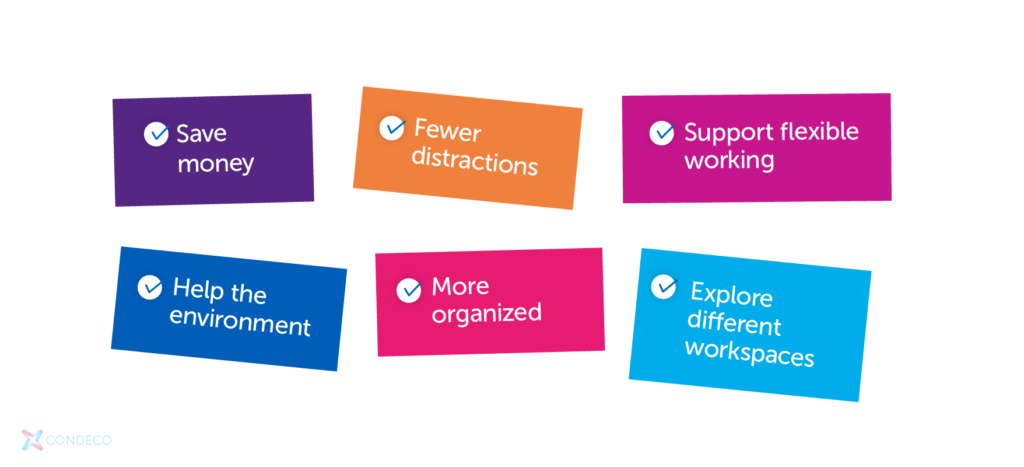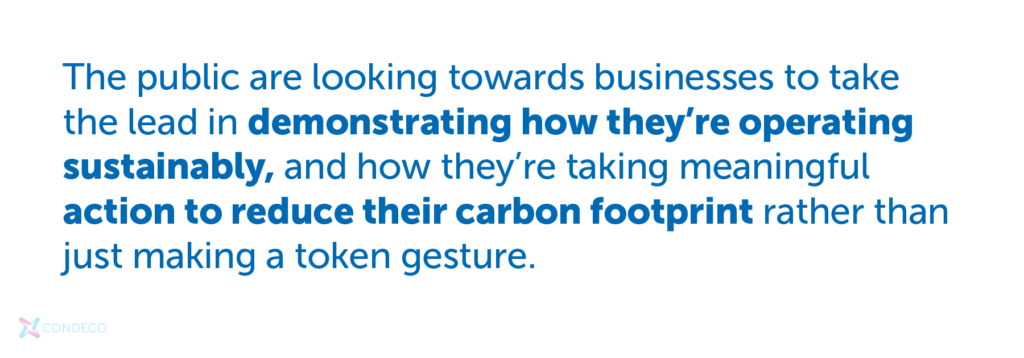
The move towards flexible work has major implications not only for employees, but for employers, too. The most obvious ones are in the changes to day-to-day operations, the ways in which employees collaborate with each other, and the ways in which they access the data and applications they need to do their jobs. But there are far more knock-on effects for businesses than that, many of them more physical and tangible. With more people working from home more often, companies can easily find themselves in a position where they have far more real estate and far more workspaces than they actually need on a daily basis. It’s no surprise, therefore, that now is the time to investigate downsizing the physical office and reshaping it with different types of workspaces to make it more efficient, and better suited to evolving working models.
There are six major benefits that businesses can enjoy by moving to a smaller office full of more practical, more efficient workspaces:

Save money
A smaller demand for workspaces means a smaller demand for real estate, and that means that significant savings can be made on office lease costs. If, for example, a business that was previously spread across three floors of an office block can now easily fit into two floors, then being able to cut back on lease costs by a third makes a major positive contribution to the bottom line. And the savings don’t stop there.

A smaller office costs less in all the utilities and services that are needed to keep it going: heating, lighting, ventilation, air conditioning, energy to power computers, cooling for servers and data centres, and even the amount it costs to keep it clean. Smaller offices are also often older, and therefore lower in rent than huge, new buildings. It’s a great choice for start-ups and entrepreneurs who want to get things off the ground quickly. All these factors can be a significant motivator in slimming down office space, especially at the current time when energy costs are escalating rapidly around the world. You will also get more control over these functions, especially if you keep non-traditional hours.
Help the environment
Now that the worst of the pandemic is hopefully behind us, the issue of climate change is once again dominating the headlines. And once again, the public are looking towards businesses to take the lead in demonstrating how they’re operating sustainably, and how they’re taking meaningful action to reduce their carbon footprint rather than just making a token gesture.

Rationalizing office space is the perfect opportunity for businesses to take that meaningful action. The reduction in energy use mentioned in the previous point doesn’t just cut costs, but cuts out emission production, too, allowing a company to operate cleaner and greener. And if a business really wants to push its green credentials, it can also incorporate the savings being made through less frequent commuting, now that employees work across a mix of home and the office.
Fewer distractions
When working in a big open office with large groups of people and multiple teams with different focuses, people can easily become distracted and there will often be plenty of background noise. While it won’t be impossible to focus, it can be more tempting to chat. Of course, that leads to an increase workload in the long run and decreased productivity. Smaller offices – especially when coupled with flexible working where people may be at home or in remote spaces – can mean fewer distractions.

More organised
A smaller office space means that there is less room for clutter. Dedicate a space for built-in storage so everything has a space and eliminates the needs for additional shelves or cabinets taking up your valuable office space. Tidy office, tidy mind.
Support flexible working

Moving towards smaller and more practical workspaces helps redefine the relationship between employees and the office. No longer does the office have to be seen as the place where work is done and where attendance is expected. Instead, it can be repositioned as the place where employees come in to fulfill a specific need, such as collaborating in person with certain co-workers, building bonds through socializing, or boosting their skill set in training and development events.
To use the office in this way, employees need to be able to easily book the spaces they need for the times they need them, without having to go through an admin team that takes time to manage booking requests. A workpace management platform which allows them to view available spaces and book them from wherever they’re working, enables that flexibility.
Explore different workspaces

Allied to the previous point, the reshaping of the office environment allows much greater potential to think outside the box and change the types of workspaces that are available. The old concept of having row after row of identical desks, and a variety of similarly identikit meeting rooms can be consigned to the trash. This is the chance for businesses to learn about how their employees want to work when in the office and implement new workspaces to suit. This could include greater variation in meeting rooms, less formal breakout zones for relaxed co-working, and individual work pods for taking calls or focusing in peace. All these spaces can then be added to the workspace management platform, so that employees can access them whenever they need them.



